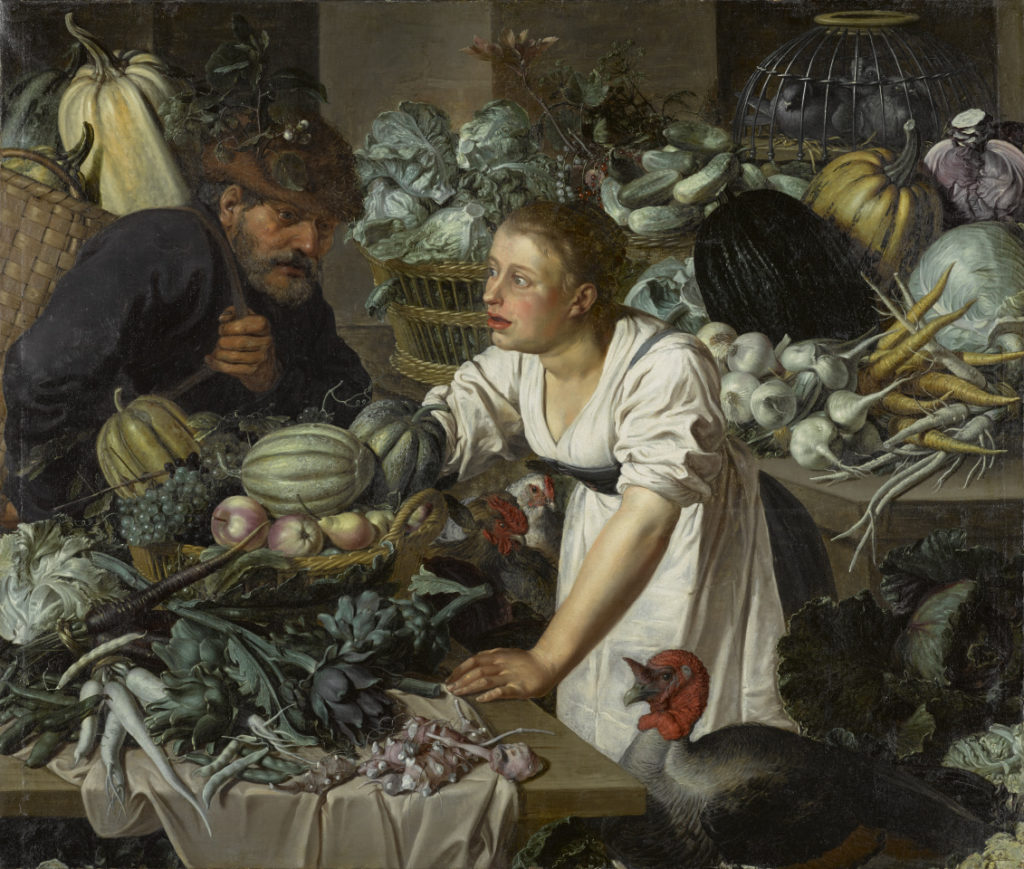Still Life with Two Figures (work of art)
Artwork Info
Key Ideas
- Still Life with Two Figures shares similarities with Pieter Aersten’s Meat Stall with the Holy Family Giving Alms, another work from the NCMA collection. Each exemplifies the Northern European tradition of market and kitchen still-life scenes popular during the 16th and 17th centuries.
- Impasto, the process of laying paint or pigment on the canvas thickly so it stands out from the surface, was applied to the produce to give them a more realistic texture. A famous example of impasto style painting is Starry Night, by Van Gogh. The use of impasto in Still Life with Two Figures is particularly noticeable on the melons that are sitting in the baskets.
- The painting does not make overt connections with Christianity, but the juxtaposition of the old man and the young woman has been suggested as a subtle reference to Mary and Joseph, the parents of Jesus.
Learn More
Still Life with Two figures shows a cornucopia of produce and live poultry at a market stand. Green beans, squash, pumpkins, and the most prominent symbol of modern Thanksgiving, the turkey, were all native to the Americas. They appear in this Dutch painting because, like so many other products such as pepper, sugar, and tobacco, they were introduced to Western Europe by colonizers and explorers returning home. Both the richness showcased here as well as the specific items shown could not have existed without Dutch colonialism.
The two figures, a young woman and a bearded old man, are immersed in the produce. The woman wears a long apron with the sleeves rolled up, suggesting that she is accustomed to hard work. The old farmer who joins her shows a slightly alarmed expression while he is carrying a basket that is filled with pumpkins and squash. The figures are dwarfed by the abundance of produce that fills the space of the painting around them. The tables appear to tilt downward, and this skewed perspective, along with the extreme crowding of the painting into the foreground pulls from artistic traditions from the century before.
Additional Resources
Khan Academy
A lesson on Pieter Aersten’s Meat Stall with the Holy Family Giving Alms from Khan Academy.
Museum of Modern Art
https://www.moma.org/collection/terms/49
Definition of impasto from the Museum of Modern Art with example from the museum.
RKD – Netherlands Institute for Art History
https://rkd.nl/en/explore/artists/66925
More information about Pieter Cornelisz. van Rijck from the RKD – Netherlands Institute for Art History

